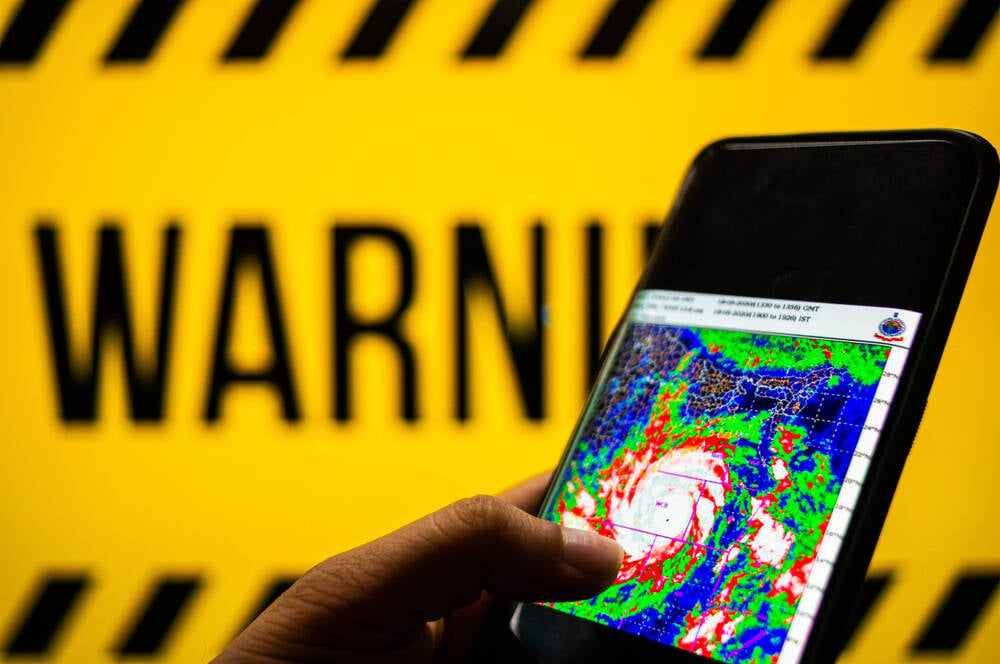As Hurricane Ian Hits, FCC Rules Cell Carriers Must Help Each Other In Disasters

The Federal Communications Commission today issued rules codifying a voluntary 2016 agreement between cellular networks that they cover for their competitors knocked offline during a natural or cyber disaster.
The Mandatory Disaster Response Initiative (MDRI) requires all facilities-based mobile network operators, defined as those that own and operate their own network infrastructure, to enter into mutual aid agreements with other facilities-based operators, and also extends some provisions of the 2016 Wireless Resiliency Cooperative Framework (WRCF) so that the MDRI can be activated more easily than its voluntary predecessor.
The WRCF included provisions that were incorporated into the MDRI: that telecoms giants have to provide roaming connectivity to each other's users, where possible, in disaster situations when necessary; that telecoms "foster mutual aid during emergencies;" assist in municipal preparations and restoration efforts; and create a system to improve public awareness of communications service and restoration status in a disaster.
When it was a voluntary framework, the WRCF was only able to be activated in one narrow scenario: when the Federal Emergency Management Agency (FEMA) activated its emergency support function #2 (ESF-2) [PDF], a program that helps restore damaged communications infrastructure; and only when activated in conjunction with the FCC's Disaster Information Reporting System (DIRS), a web-based platform used during emergencies to coordinate the status and recovery of communication networks.
The MDRI, on the other hand, can be enacted when either ESF-2 or DIRS is activated, or when the Chief of the Public Safety and Homeland Security Bureau orders its activation in response to requests received from states that have activated their own emergency operations centers.
- Weather forecasters are STILL banging on about 5G clashing with their sensors. As if climate change is a big deal
- Letter to FCC: Why are US carriers locking handsets to networks?
- Satellite operators want option to exceed deorbiting rules
- Japanese boffins build solar-powered, remote-controlled cyborg cockroach
The FCC said it is still considering whether to extend the MDRI "to entities other than facilities-based mobile wireless providers and outside the wireless industry as a whole," but didn't specify which other organizations, or what types, could end up being included.
One group that is being included despite the Rural Broadband Association and Competitive Carriers Association's complaints are small providers, which the FCC defines as those employing less than 1,500 people. Objections were raised because small providers "need to prioritize work on their own networks or lack the resources required for compliance in the midst of emergencies," the US regulator said, but added "we find that, as a practical matter, such concerns can be mitigated."
The new MDRI rule is effective October 31, and facilities-based mobile carriers have six months from that date to show compliance, while small carriers are being given an extra three months to get their houses in order for a disaster, natural or otherwise. ®
Google Leverages AI To Automatically Lock Phones During Theft
Amid increasing incidents of mobile phone thefts, Google has launched an AI-based feature that automatically locks the s... Read more
Microsofts Emissions Surge Nearly 30% Amid AI Demand Growth
Microsoft has reported a nearly 30% increase in its emissions from 2020 to 2023, underscoring the challenges the tech gi... Read more
Impact Of AWS Leadership Change On The Global AI Race
The recent leadership transition at Amazon Web Services (AWS), with Adam Selipsky stepping down and Matt Garman taking t... Read more
The Global Impact Of App Stores On Technology And Economy
Since Apple launched its App Store in 2008, app stores have become a central feature of the digital landscape, reshaping... Read more
Alibaba's Cloud Investment Strategy: Fuelling AI Innovation And Growth
Alibaba Group's cloud business, Alibaba Cloud, has emerged as a powerhouse in the tech industry, spearheading innovation... Read more
Elon Musk Takes On Government 'Censorship': A Clash Of Titans In The Digital Arena
Elon Musk's recent endeavors to challenge government-led content takedowns mark a significant development in the ongoing... Read more

